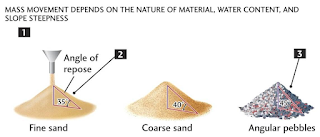PHARMACEUTICAL LIQUID PRODUCTS: CLASSIFICATION
Introduction:
·
Most
convenient to children and infants.
·
Prepared
by dissolving API in aqueous or non-aqueous solvent, by suspending the drug or
by incorporating drug into one of two phase.
Advantages:
·
Drug
rapidly available for dissolution
·
Suitable
for children, infants, geriatric and mental patient
·
For
drug which produce irritation in dry form
·
Uniformity
of dosage form in homogeneous solution.
·
Unpalatable
drug given with flavour and mask its taste
·
Hygroscopic
and deliquescent medicament not dispense in solid form so they can be formulate
in liquid dosage form.
·
Color
and flavour produced beneficial psychological effect on patient.
Disadvantaged:
·
Inconvenient
to carry, storage and transport.
·
Stability
of medicament poor as compare to solid, due to susceptibility of hydrolysis and
microbial growth.
·
Incompatible
drug cannot be given
·
Every
time accurate dose not taken by the patient.
·
In
case of accidental breakage loss of whole product.
·
Suspension
and emulsion have many problems
Liquid Preparation
Classification
·
Monophasic
o
Oral
use: Solution, Syrup, Elixirs, Mixtures Draught, Drop, Linctuses, Tincture,
Spirit
o
External
use: Liniments, collodion, Lotion
o
Parenteral
Use:
o
Special
use:
§ Oral cavity: Gargles, Mouth washes,
Throat Paints, Glycerites, Throat spray
§ Other than oral cavity: Douches, Enemas,
Ear drops, Nasal drops, Nasal spray, inhalations
·
Biphasic:
o
Liquid
in Liquid:
§ Oral & Parenteral: Emulsion
§ External: Applications, Lotion,
Liniment, Enema
o
solid
in liquid:
§ Oral: Mixture with diffusible solids,
Mixture with indiffusible solid, precipitates forming mixture
§ External: Applications, Lotion,
Enemas, Inhalations, Aerosols
§ Ophthalmic and Parenteral: Eye drop
and Eye lotion.
Reference: Pharmaceutics-2, Dr. G.K.Jani, B.S.Shah Prakashan




hhi
ReplyDelete